Neoclassical on College Hill
Greek permeates many things within the modern world. Greek ideas, art, and architecture are part of our everyday lives even if we fail to recognize it. College Hill is no exception to this; Greek influence can be found in everything from geometrically inspired wrought iron to towering columns. While Greek architectural elements are common, there are very few structures that are purely neoclassical in design. A more common use of neoclassical elements is in the form of ornamentation. The majority of the structures found on college hill are not neoclassical in design, but are adorned with various Greek elements. The combination of neoclassical with elements of various other architectural styles shows how versatile Greek architecture is, and illustrates the way in which Greek influence has, over time, blended into the fabric of modern society.
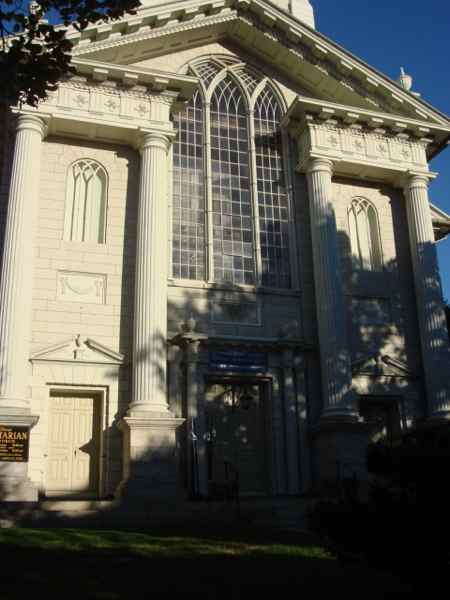
One example of this architectural combination is the First Unitarian Church of Providence. This building combines neoclassical ornamentation with a purely gothic structure. Most obviously, there are four large doric columns, two on each side of the structure, and four smaller doric columns, two on either side of the small door at the center of the building.
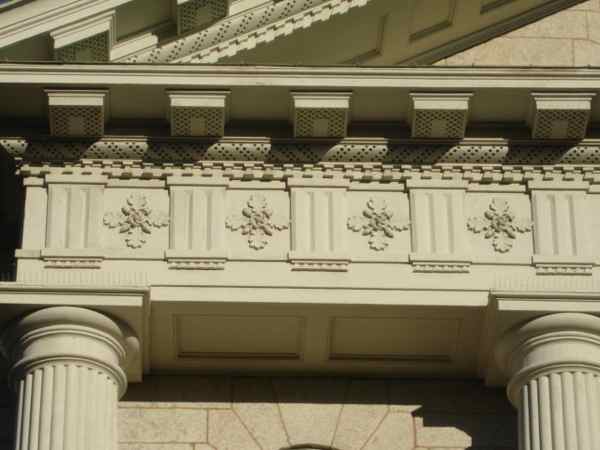
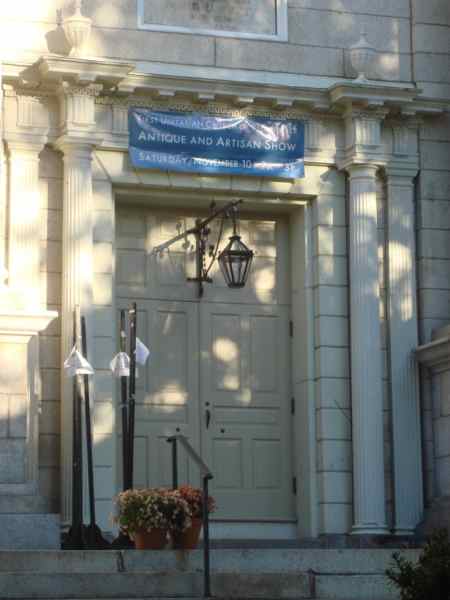
Above each pair of columns there are triglyphs and metopes. This design is typical of the doric order, and is similar to the Temple of Athena at Paestum. In the area above the doorway and small columns the metopes are undecorated. Just above the triglyphs and metopes there is a geometrically inspired menander that follows along the lentil area of the doorway. There is a combination not only of different architectural styles, but of different Greek time periods. Geometric designs are mixed with doric, ionic, and corinthian orders. The metopes directly under the pediment and above the large doric columns are decorated in a leaf design. Unlike Greek temples, these carved metopes do not face a specified direction, or location.The decorated metopes continue around the frieze to the point where they are almost hidden. This shows that they have no special significance and were intended only as decoration and uniformity, which was not the case in ancient temples. Carved metopes often depicted specific events or mythologies and were placed in a specified location to show their significance. Above the decorated metopes and the triglyphs there is a larger guttae design exactly like those found just below the triglyphs.

Small unadorned pediments cap the two smaller doors lacking columns on the sides columns. These small pediments are broken at the center to make room for an urn. The urns are similar to those of the ancient world in which cremation remains were placed and later buried. The urns of ancient times were often painted and decorated with the religious ceremonies of the dead; these urns, however, lack decoration and are simply placed in the center of pediments and above columns. These urns were part of religious events in the ancient world and thus have a connection to the religious nature of the modern building they adorn.The large pediment is broken in the center by a large gothic lancet window. The separation of the pediment by the gothic window exemplifies the way in which elements of Greek architecture are modified and used in combination with other architectural styles.
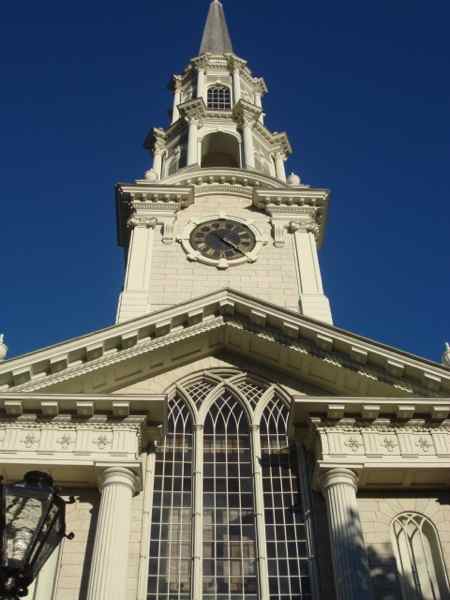
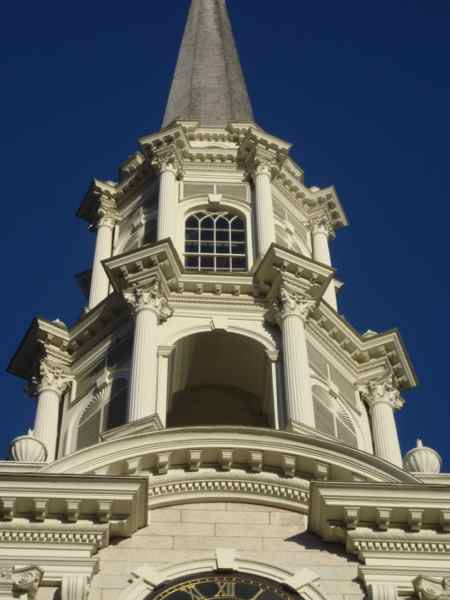
The gothic spire of the church is also adorned with greek elements. Each level of the spire is surrounded by columns of various orders. Atop each column is an urn, which also alludes to the greek past. Corinthian columns decorate the top two sections of the spire, while columns of the ionic order adorn the lowest level.
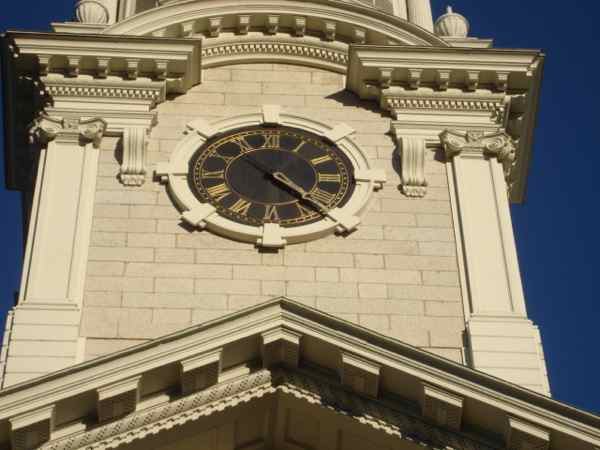
These are not free-standing columns, but instead are engaged to the background wall. The ionic columns on the lowest level of the spire are done in the fourth century style. Ionic capitals were originally designed on a flat plain and only contained four volutes, two on the front and two in the rear. In the fourth century, the Greeks decided to perfect the symmetry of the Ionic capital by inclining the volutes to a forty-five degree angle. This adjustment allowed a continuous three-dimensional viewing of the capital, similar to the capital of the doric order. Each of the three orders of classical architecture are represented in some form on this building. There are also elements that are reminiscent of the geometric period, and decorations that are not of a set order or time period, but nonetheless allude to the ancient greek past.
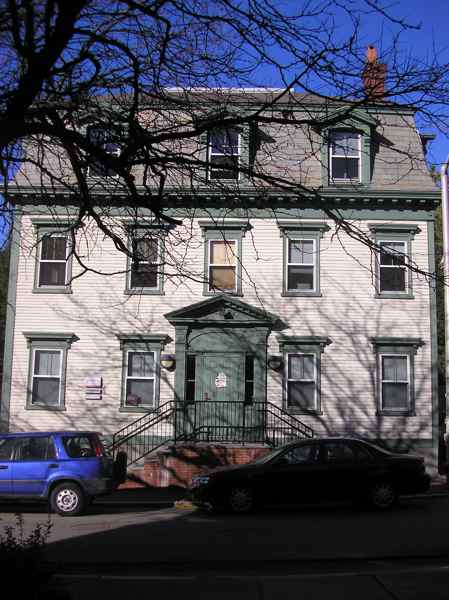
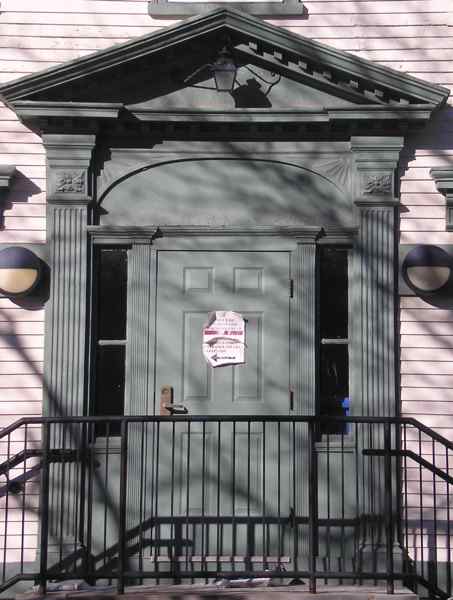
The combination of the neoclassical and gothic styles is common throughout College Hill, the majority of which are gothic structures with neoclassical ornamentation or exhibit subtle neoclassical influence. This structure, for example, only shows greek influence on the doorway, which is relatively common. Around the door there are pilasters atop which sit carved pieces that resemble the carved metopes of Greek temples. The pediment above the door also alludes to the Greek. The building also displays aspects of gothic design, seen in the use of the mansard roof.
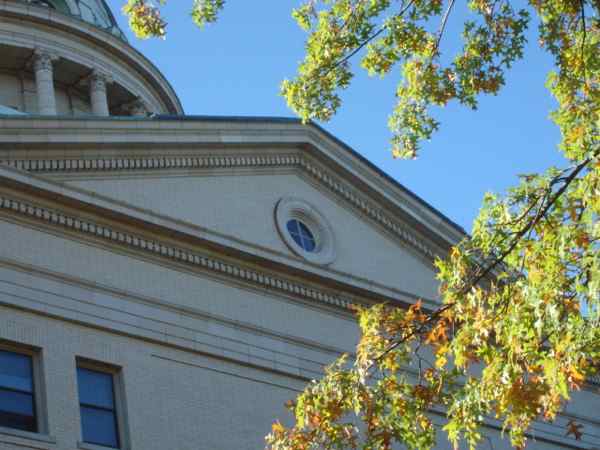
One exception in which neoclassical architecture is used with gothic ornamentation is the use of faux rose windows in pediments. There are pediments throughout college hill that contain a circular window at the center, which resemble the rose window of gothic architecture.
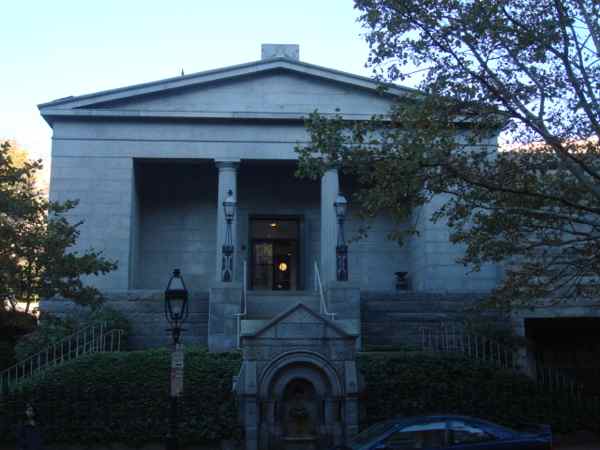
Another connection between the neoclassical and gothic is the Athenaeum. The Athenaeum is a purely Greek building without any outside influence; however, directly in front of this Greek building is a gothic style fountain. Even when Greek is the sole architectural style, it is still connected with other elements of architecture. While the Athenaeum lacks outside influence, the fountain has hints of the neoclassical with its small columns and the pediment on top that mimics the pediment of the athenaeum directly behind it.
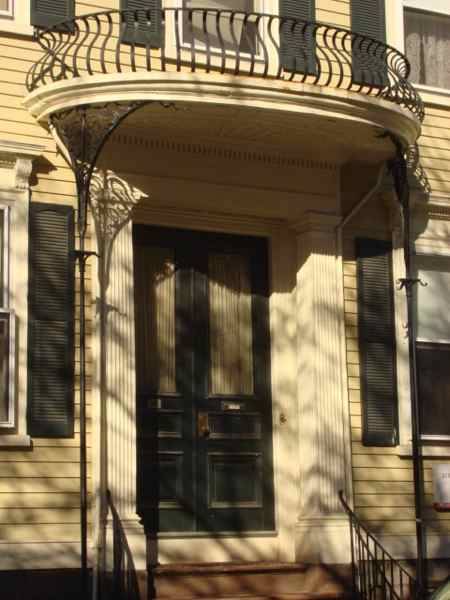
Although gothic and neoclassical are a popular combination, they are not the only one. Subtle combinations of Art Nouveau and neoclassical exist. The doorway of 22 Benevolent Street is one such example. The doric style square columns and the frieze above the door are two obvious connections to the Greek style. Another connection to the classical antiquity are the iron columns that support the balustrade. Though these columns are of the Art Nouveau style and do not blatantly resemble classical columns, the influence of the columns of ancient Greece are evident. The top area of the column where a capital would be is decorated with a vegetal design resembling the acanthus leaves of the corinthian capital. This shows how ancient Greek style and architectural elements have been adapted over time and are still in use.
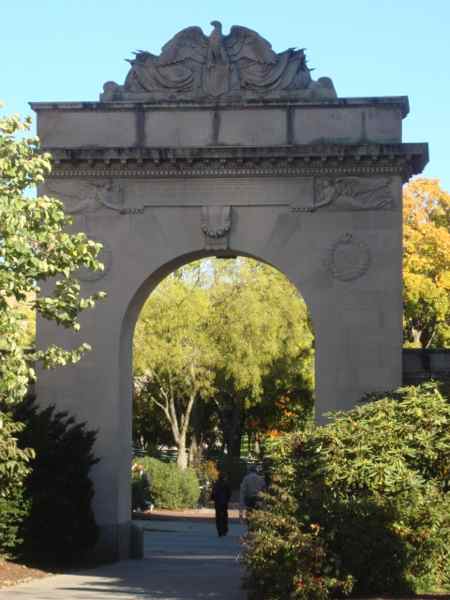
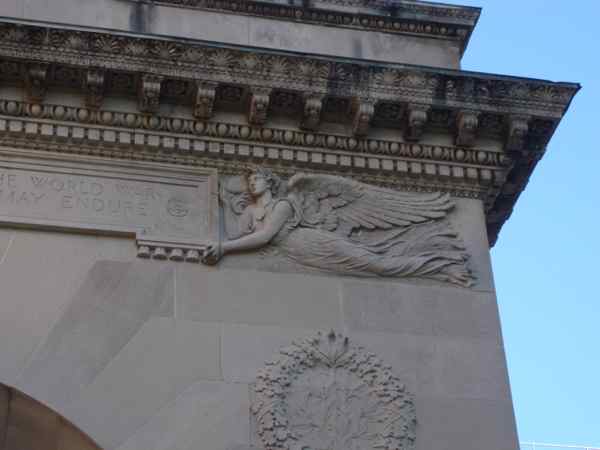
The influence of ancient Greece can also be seen in Roman art and architecture. The arch, which was a Roman invention, is decorated with neoclassical elements. The banner that is carved into the arch has a pattern below the corners that resembles the guttae found in the doric order. There is also high relief sculpture in the corner of the arch. The earliest examples of relief sculpture were found in Greece, such as the Lion Gate at Mycenae. Just above the relief sculpture is the egg-and-dart ornamental design of the ionic captial similar to the one found at the Erechtheion.
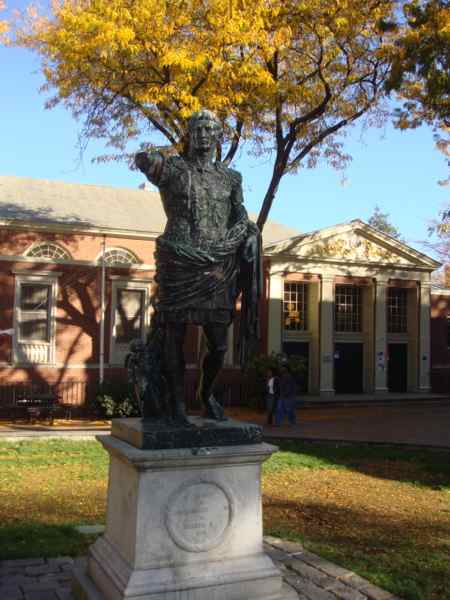
The statue of Augustus as General in Wriston Quadrangle is an Early Roman Empire statue with Greek connections. The Greeks idealized the male body in their sculptures, representing the physical prowess and vitality of youth. The scenes of battle and subsequent glory on Augustus’s cuirass allude to the scenes of gigantomachy and Amazonamachy depicted on the frieze of the Parthenon in Athens. As seen above, Roman art and architecture throughout college hill has deep rooted connections to the Greek past.
Harry Kashdan: I'm really impressed by your knowledge of gothic architectural styles. The way Greek elements are used in ornamentation, rather than direct copying of entire structures, is really interesting.
